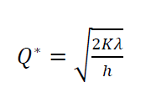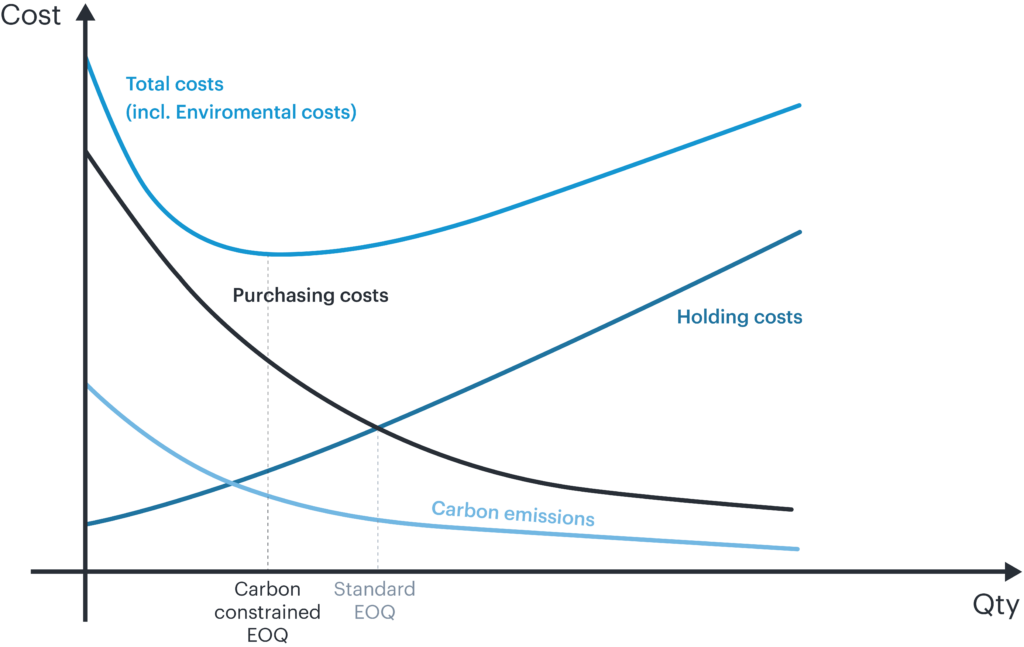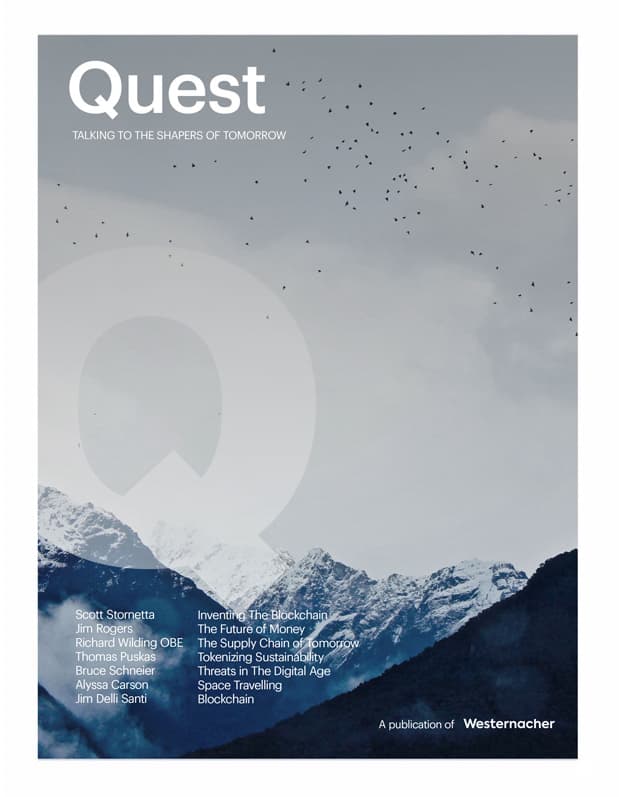Lot sizes are an important parameter in supply chain management; in fact, they have an impact on the frequency of replenishment of goods and consequently, the optimal safety stock maintained to meet a target service level goal.
Most of us are probably familiar with the economic order quantity (EOQ) model. This economic model is used in inventory control theory to find the order quantity that minimizes the total average cost of replenishment under deterministic demand conditions and assumptions, such as a constant demand rate.
The Wilson’s or Harry’s formula determines how to calculate the EOQ under these circumstances:

- λ is the constant rate of the demand over time
- h the inventory holding cost per unit
- and K is the fixed cost for ordering or producing
The EOQ model accounts solely for the economics of the replenishment and inventory holding activity related to the provision of required items. But these activities also have impacts on the environment and the society, which should be considered as well.
The value of the EOQ could change when considering environmental or social impacts.

In the literature, there are several models that allow for the consideration of the carbon footprint in determining an environmental EOQ.
In particular, we have identified models that determine an environmental EOQ
- through direct accounting treating the carbon footprint as an additional source of cost;
- through a carbon tax assumed to have an externally tax applied to the emissions;
- applying a direct cap that could be set by the regulatory agencies or by the public awareness (e.g. imposed by customers);
- considering a cap and the possibility to access the carbon trading market.
The EOQ calculation using direct accounting becomes

Where the additional parameters f and g represent respectively the fixed cost of environmental impact for each replenishment cycle due to setups, order processing or transportation while g the cost of environmental impact due to the inventory holding.
This can allow planners to review their plans and perform simulation in SAP IBP by applying different lot sizes and analyzing the impacts.
The decision on which approach to use strongly depends on how the results of the calculated EOQ are planned to be used and on the processes for master data governance of the enterprise.
